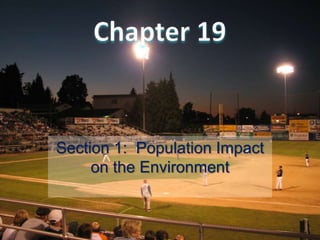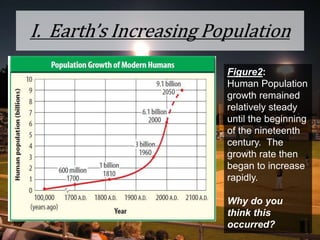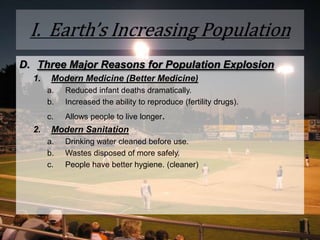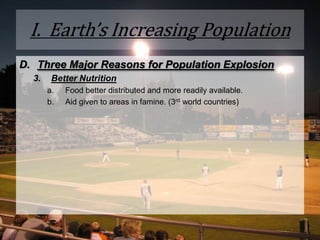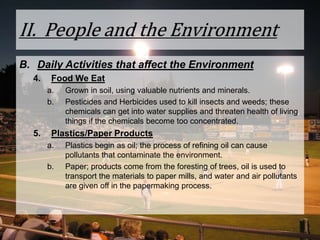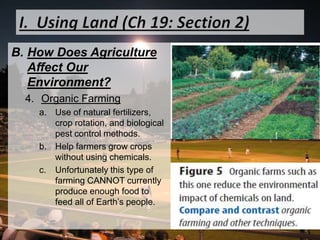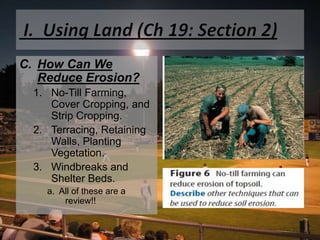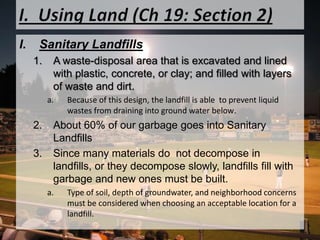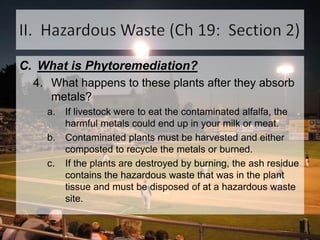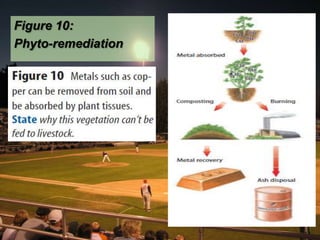The document discusses how population growth and land use impact the environment. It notes that the human population has grown rapidly since the 1800s due to advances in medicine, sanitation, and nutrition. The population is predicted to reach 9 billion by 2050. As population increases, so does resource consumption and waste production. Agriculture uses 11% of the Earth's land but farming practices like chemical usage can contaminate soil and water. Deforestation reduces forests, which impacts climate and species. Development like roads and buildings also affects the environment by increasing runoff and reducing groundwater. The large and growing human population poses challenges around whether Earth's resources can support such high demand sustainably.
